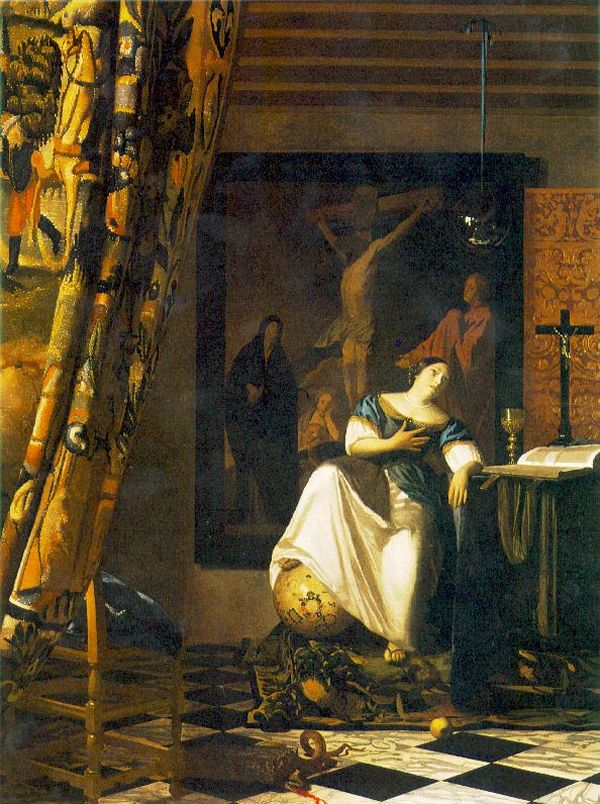
The Allegory of Faith
New York, Metropolitan Museum
113x88 1671-74 (Globe by Hondius, 1618)
At the age of forty, Vermeer has returned to the large-format religious paintings with which he begun his career. In his twenties, he had painted Christ in the House of Martha and Mary and Saint Praxidis. Vermeer converted to Catholicism as a condition of his marriage to Catherina Bolnes, and was close to the Jesuit community in Delft: one of his sons was named Ignatius, after the founder of the Jesuits, Ignatius Loyola. This painting may be a commission, as with the earlier paintings.
Here we see the traditional Vermeer mise-en-scene: a Dutch interior, with black-and-white floor tiles, horizontal roof beams, a painting on the back wall to tell the story, and a woman as the subject. A richly embroidered curtain, like a theatre curtain, hints that this is a stage set. But then the similarities cease abruptly: a snake with blood coming out of its mouth is not part of a well-swept Dutch interior. The painting can only be seen as a collection of symbols, not as the emotionally convincing depiction of mood that we have come to expect from Vermeer.
The woman is Eve and the painting is the crucifixion of Christ. On the floor there is an apple with which she tempted Adam, and the snake represents the victory of good over evil. Her complex and unconvincing posture includes her feet resting on the terrestrial globe, the same one as appears in The Geographer. Hanging from the roof is an exquisitely rendered glass sphere, thought to be a symbol of human reason.